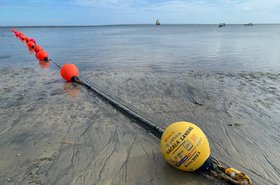The Federal Communications Commission (FCC) has revealed that only five companies have completed the removal of banned Chinese telecom equipment.
In a report, the FCC said that those companies have "filed final certifications with the Bureau indicating they have permanently removed, replaced, and disposed of all covered communications equipment and services," that were within their networks.
The report didn't name the companies that have completed the removal of the kit.
In the report, the FCC notes that it expects the number to increase by the time of the next report, but did not specify a figure.
It stems back to 2019, when Congress passed the Secure and Trusted Communications Networks Act, which authorized the FCC to reimburse certain telecommunications providers for the removal of Huawei and ZTE Corp.
To support the removal of this equipment, the FCC agreed to provide up to $1.9 billion for communications providers that have 10 million or fewer subscribers.
However, funding applications hit $4.98 billion, creating a $3.08 billion shortfall.
The companies were told in February 2020 to remove the Chinese equipment due to alleged security concerns.
According to the FCC, it's received 12,893 reimbursement claims across 122 of the 126 applications approved for a funding allocation, and has approved $396.5 million in disbursements, which will cover both removal and replacement costs.
Both Huawei and ZTE have been viewed as a national security risk to the US, and deemed to have close ties to the Chinese state. ZTE is partially state-owned, while Huawei has regularly stated it is not owned by the government.
The US hasn't been the only market to rip and replace the banned equipment, with other notable countries including the UK, Belgium, Denmark, the Netherlands, and Sweden.
It was revealed last week that BT missed the December 31, 2023, deadline for removing Huawei equipment from its network core.
First reported by The Telegraph, the company successfully removed Huawei from its 4G and 5G services but has not yet managed the 2G and 3G services.







